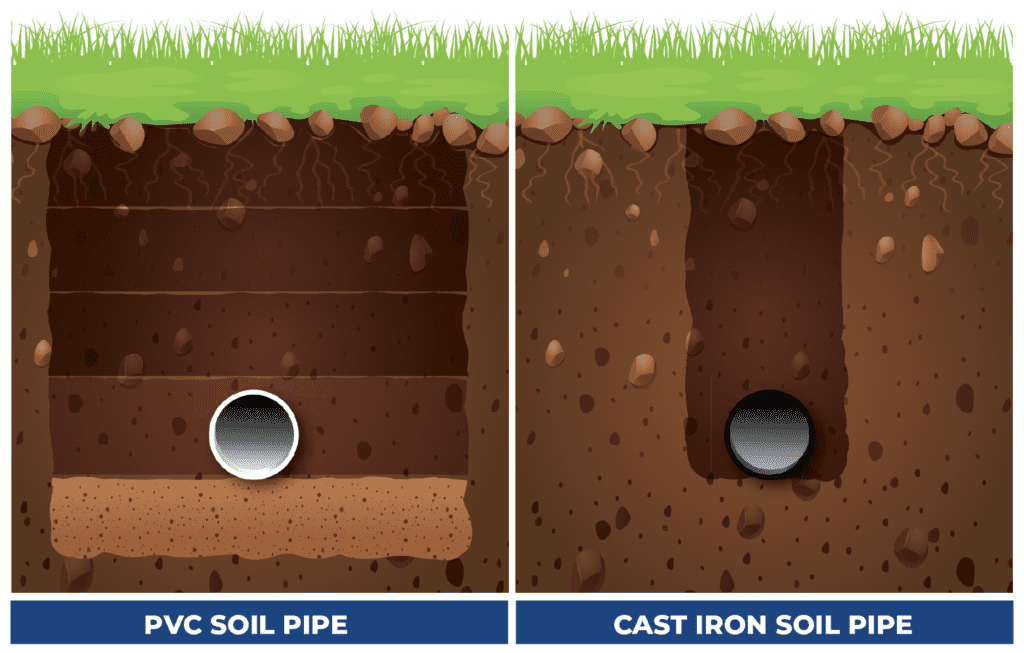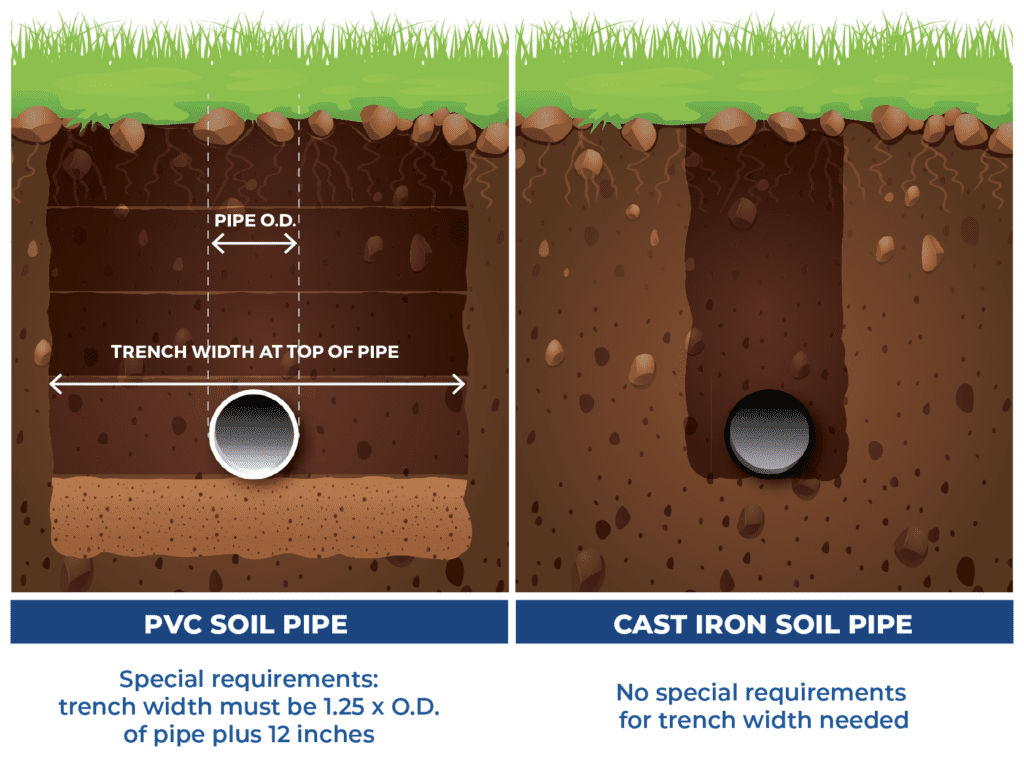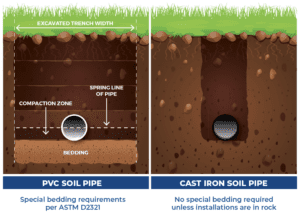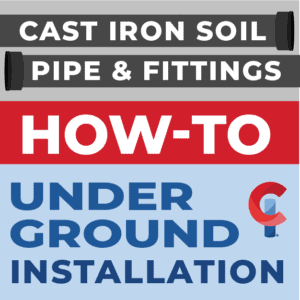Underground Installation How-To
What You Need to Know: Underground Installation
The physical properties of cast iron soil pipe make it the best DWV (Drain, Waste, and Vent) material for underground installation. The two keys to proper underground installation are trench preparation and backfilling. The trench should be wide enough to assemble the joints. The total load on the pipe includes both earth load and truck load. For additional information, refer to CISPI’s brochure, Trenching Recommendations for Cast Iron Soil Pipe.
Safety procedures in trenching should be observed, including provisions to avoid the collapse of the trench wall. The trench bottom should be stable enough to support the complete barrel of the pipe. If possible, the barrel should rest on even and undisturbed soil. In certain soil conditions such as rocky, it becomes necessary to excavate deeper than needed, then place and tamp backfill material to provide an appropriate bed. Holes should be provided at each joint for the hub or couplings to allow for the continuous support of the barrel along the trench bottom. (See Figure 6.)

Figure 6—Type 1 Trench Condition: (a) No Pipe Bedding, (b) Hard Trench Bottom, (c) Continuous Line Support with Hub or Coupling Holes.
If the ditch must be excavated deeper than the depth of the drainage pipe, place and tamp backfill material to provide uniform support for the pipe barrel. Many times in the installation of underground soil pipe it is necessary to change the direction of the line. Cast iron soil pipe will allow this through deflection in the joints. Installation should initially be completed in a straight line and then deflected to the appropriate amount. Maximum deflections should not exceed 1/2 inch per foot of pipe. This would allow five inches of deflection for a ten-foot piece of soil pipe and 2 1/2 inches for a five-foot pipe. For changes in direction greater than these deflections, an appropriate fitting should be used. As shown in the images below, the trenching requirements call for more space and backfill materials to avoid deflection.



Once installation is completed (for joining methods, refer to page 45 in the Cast Iron Soil Pipe and Fittings Handbook), the underground section is ready for the test. Because this portion of the system is usually the largest diameter pipe, it may be necessary to restrain the system or joints from movement prior to testing. This may be done by partially backfilling and leaving the joints exposed for inspection, or rodding and/or bracing.
After testing is completed, the trench can be properly backfilled. When backfilling, care should be taken to protect the pipe from large rocks, stones, or frozen fill material, that could damage the pipe. Cast iron soil pipe laid on a solid trench bottom requires no tedious placement of selected backfill materials. Installers should always consider local conditions, codes, manufacturer instructions, and architect/engineer instructions in any installation.
Contact your Cast Iron Crew for more installation How-Tos.
For More Information
The CISPI Cast Iron Soil Pipe & Fitting Handbook offers detailed information on the manufacture and use of cast iron.
Download the HandbookSubscribe to CISPI eNews
Subscribe to the Institute’s eNewsletter, Cast Iron Crew News.
Subscribe NowFor More Information
The CISPI Cast Iron Soil Pipe & Fitting Handbook offers detailed information on the manufacture and use of cast iron.
Download the HandbookSubscribe to CISPI eNews
Subscribe to the Institute’s eNewsletter, Cast Iron Crew News.
Subscribe Now